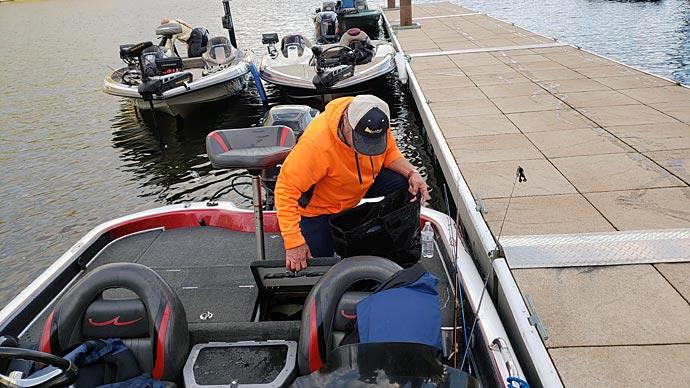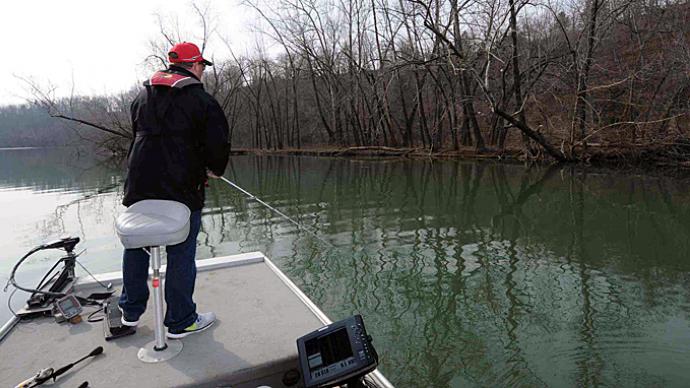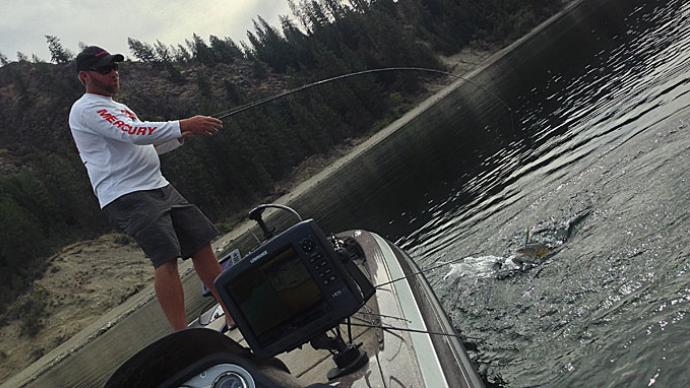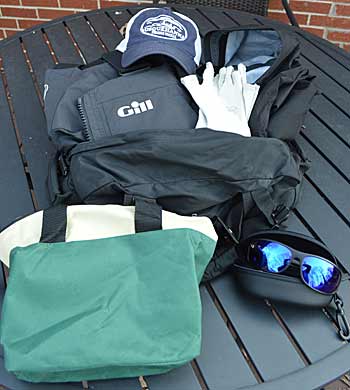
It’s impossible to miss the rapid growth of bass-tournament fishing. Events for high-school anglers are attracting hundreds of boats. Weekend competitors have never had more options. And all of us enjoy live on-the-water coverage of the top professional trails. That availability is the encouragement many bass anglers need to pay their first entry fee.
If you’re part of this year’s bass tournament rookie class, prepare for a fun-filled and exciting adventure. You’ll get the chance to test your angling abilities, learn techniques, explore new-to-you waters and meet plenty of fishing friends. But before your mind goes to what will be, consider what you’ll need to bring, whether you’re fishing from your boat or kayak, riding as a co-angler, or joining a friend in a team tournament.
It’s easy to forget essentials or bring too much — or worse, the wrong stuff — to your first tournament. While each day on the water brings new challenges, wants, and needs, there are core things you’ll need, including the seven below. Managing them will be your first victory and lead to many more down the road.
Tamed tackle
If you’re ready to test your bass-fishing might, you’ve probably amassed an extensive collection of tackle. While you want to be prepared for any fishing scenario, you’ll do better more often if you leave a good portion of it — and the distraction it represents — at home.
Sort your tackle into small utility-style boxes. Dedicate each to one style of lure, such as square-bill crankbaits, jerkbaits, jigs, or topwaters. The same goes for soft-plastic lures, which can be packed in boxes or left in the resealable bags they are sold in, grouped by type, size, or color in larger bags.
When and where your tournament is scheduled will dictate which boxes and bags you’ll bring. Seasonal patterns tell where the bass are most likely swimming, and research will tell you the main types of structure and cover. For example, if you’re headed to a vast Southern reservoir in February, almost all of your topwaters and punching gear can stay at home.
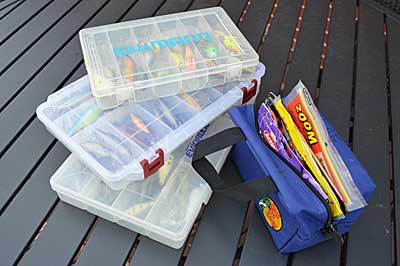
You’ll bring two utility boxes to every tournament. One will be dedicated to terminal tackle, including swivels, weights, hooks, beads, and jig heads. Include some spare treble hooks and split rings, too. The second should have a spattering of lures that don’t have an expected use but plenty of your confidence. While it's unlikely you’ll throw a topwater in the previously mentioned wintertime tournament, having one may save your day if the lake has a warm-water discharge where bass bust on baitfish.
Pack the boxes and bags you’re taking, scissors, a hook file, and pliers, in a small to medium duffle-style tackle bag. They are easy to tote and hold more than their looks reveal. And don’t take a shortcut by buying the biggest one so you can bring everything you own. Be realistic when making your lure choices. Less often leads to more — efficiency, success, and room in the boat.
Multipurpose rods
You also probably collect rods and reels like you do lures. For specific techniques such as drop-shotting or frogging, many are tweaked to perfection. But bringing them all isn’t practical. Shoot for four to six instead.
If all goes as planned, you’ll spend your day fishing less than a handful of techniques. So, bring the rod or rods that are best suited for those. You’ll need a flipping stick if the lake you compete on is filled with aquatic vegetation.
But you also will want a couple of outfits that fish several techniques well. These will have medium or medium-heavy power rods that cast Texas-rigged soft plastics, crankbaits, spinnerbaits, vibrating jigs, and topwaters. You likely won’t cycle through all those lures in one day, but you’ll be ready to use any of them.
Consider your line choices, too. Spool your flipping stick’s reel with super-strong braided line, but for your multipurpose rods, choose monofilament. It’s versatile, and today’s versions are strong and easy to cast. Unlike the slightly more abrasion-resistant and sensitive fluorocarbon, it floats, which opens the door to fishing topwaters.
Safety gear
You’re going to need a personal floatation device. PFDs must be worn whenever the gas engine runs, though most competitors shed them while fishing. You also will need to wear one all the time under special circumstances. PFDs can be required when fishing tailwaters, and during cold-weather months in some states, depending on the size and type of vessel you’re in. Failure to follow safety rules could get you disqualified from the tournament.

PFDs that automatically inflate once submerged are popular among tournament anglers. While they are comfortable to wear, their inflator requires regular review. Don’t dismiss traditional foam-filled PFDs, especially when fishing big bodies of water. They don’t require any maintenance, and you won’t have to worry about it not inflating, a scary scenario far from shore.
Wear sun protection — scarf, long-sleeve shirt, sunscreen — every day. Sun gloves are great, too. Many feature palms with extra grip. That securely keeps rod handles made slippery by rain or bass slime in your hand. It also means you don’t have to hold on tightly, reducing fatigue.
Bring a hat and sunglasses. They’ll help you see into the water and keep errant casts or lures free from snags out of your eyes or face. Nothing ruins a tournament day like an emergency-room visit.
Rain gear
Pack your rain gear even if the forecast says your tournament day will be precipitation-free. Bring it with your rods, reels, and lures every time. Foul-weather gear — its other moniker — does much more than keep you dry during a storm.
The foul-weather gear keeps you warm. While it doesn’t have much insulation value, it does stop wind exceptionally well. That allows your other layers to trap body heat. It also will keep you dry on long rough boat runs, when wave spray can soak you as much as rain.
If a new set of rain gear comes with your foray into tournament fishing, keep a few things in mind while shopping. First, pay attention to fabric weight. While thicker is helpful in cold weather, it will be uncomfortable in summer’s heat. Vented jackets keep you cool on hot days but allow icy winds inside on cold ones. You also should look for hoods that are incorporated into the jacket and have an adjustment on the back. It will keep the front of the hood out of your line of sight.
Snacks and drinks
Keep casting — that’s the mantra of bass tournament anglers. Stopping to do anything not fishing-related may mean missing the bite that makes them the winner. But tournament days, which last about eight hours, aren’t sprints. They are marathons, and even distance runners refuel along the way.
Taking a few minutes to eat and hydrate throughout the day changes everything. Fatigue fades, and your decisions sharpen. Small bites are the key to gaining that advantage without sacrificing fishing time.
Fill a small cooler — soft-sided ones are best because they’re easily stowed when empty — packed with a re-freezable ice pack and easy-to-eat food. Cut your sandwich in half or quarters, eating a piece while zipping between spots. You can do the same with cheese, granola pieces, and fruit, though leave “unlucky” bananas at home.
Hydrating has the same positive effects. You can’t beat the water, though many sports drinks provide an extra pop of energy. Unsweetened tea and fruit juices are good, too. While alcohol is prohibited during competition, it is also best to save soda for post-weigh-in.
License and cash
Buy all the fishing licenses that pertain to where you are fishing. If the lake covers two or more states or countries, as is the case along the Great Lakes, check to see if you need a license for each or if a reciprocal agreement allows one to work everywhere on that body of water.
Make sure you bring some cash, something that’s easy to forget in today’s swipe-based economy. It's customary for co-anglers to help their boater with the day’s expenses, such as fuel or launch fees. How much compensation is usually decided by both of you? Have this conversation as early as possible, hopefully before your day starts.
A good attitude
It can be easy to get wrapped up in the competition, but remember, most tournament fishing is more about bragging rights than money. Enjoy the whole day, from the conversations before takeoff to the ones that last long after the weigh-in scales are packed when everyone tells of the ones that got away and where they should have zigged but zagged. You’ll learn more here than on the water most days.
You’ll cultivate a good attitude by understanding precisely what’s expected of you as a competitor. Reading and understanding the rules — which differ between tournament organizations — is not a glamourous activity, especially when you’d rather daydream about all the big bass you’ll catch. But it’s necessary.
Many well-intentioned bass-tournament competitors have been disqualified for rules infractions, including fishing spots deemed off-limits, competing from a boat that didn’t meet minimum requirements, and fishing or landing a bass from the front of the boat when they’ve entered as a co-angler. Don’t become one of them. Take the time to read the rules and ask the tournament director any questions before the competition begins.


